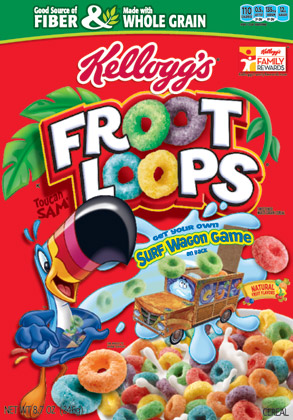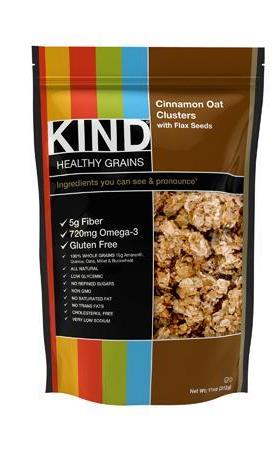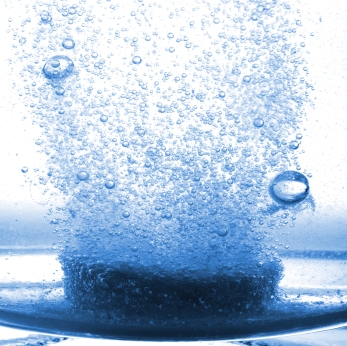How to eat processed food. Guest Post by Danielle Omar, MS, RD
My friend and colleague Danielle Omar has been a contributor to Flashfree for some time now. When I read her post “How to Eat Processed Food” on her Food Confidence blog, I knew that I wanted to share it here. Sure, it’s odd that a registered dietician is actually sharing tips on how to eat processed foods versus why you need to avoid processed food at all cost, however, Danielle has taken a unique approach that regular readers of Flashfree and Guyside will appreciate.
Thanks for allowing me to cross-post this terrific information, Danielle!
I eat processed food. And so do you. It’s almost impossible not to. Food is “processed” as a matter of course to get it from the farm (or factory) to your table. But wait, if you’ve done my detox or worked with me privately you know I’m all about clean eating and avoiding processed food.
So what’s the deal? Well, let’s start with what the word processed really means. Aside from what you can just pick and eat, most foods are processed in some way. At the same time, there are foods that people call “healthy” that to me are so processed they’re not even food.
Look at heart healthy olive oil. It needs to be processed in order for the oil to be extracted from it, right? So how do we differentiate between the good-processed and the bad-processed foods? You might say that a good-processed oil is one that is naturally pressed and unrefined. A bad-processed oil is one that is chemically pressed and refined. Because we live in choice-overload at the grocery store it can be confusing. My clients send me emails all the time asking are these crackers better than those? Which yogurt is better? And one of my favorites, would YOU eat this?
So let’s clear up the confusion about the “P” word, starting with what I consider to be good-processed and bad-processed foods. Oh, and I can’t speak to every single food out there so here’s just a sampling of whatI eat.
Good-processed foods
- bagged veggies (yes, those are processed)
- frozen fruit and plain frozen veggies
- miso
- oils (as noted above)
- raw or dry roasted nuts and seeds (I’m not talking Planters)
- oats and plain oatmeal
- single whole grains (i.e., quinoa, millet, wild rice, etc.)
- canned beans (BPA-free like Eden foods) OR boxed beans (Whole Foods has these)
- tuna and salmon in a can (high quality stuff like Vital Choice, Tonnino, Wild Planet)
- dried fruit (no sugar added)
- Plain and organic yogurt (this is a sketchy area; lots of good yogurt that’s not organic or plain)
- goat cheese
- salsa
- granola (like KIND, Purely Elizabeth)
- crisp bread crackers (like WASA, Orgran, Finncrisp)
- energy bars (like Lara, KIND, 22Days)
I’ve got a bit of a hierarchy going with the good-processed foods. For one, I look for minimally processed items. These potentially boxed or bagged foods contain ingredients that I recognize and that I would use at home to prepare the food myself. Yes, this means that I take a bit more time while shopping to read the ingredients. I don’t mind this because the grocery store is my partner in eating clean. It also means that just because a food is gluten-free or is made with quinoa or greens — that doesn’t mean it’s clean eats. Take, for example, this roasted garlic chicken frozen dinner, a gluten-free gem made with spinach from Lean Cuisine.
Ingredients: Water, cooked chicken tenderloin (chicken tenderloins, water, seasoning), modified corn starch, sugar, potassium chloride, yeast extract, dextrose, spice, onion powder, garlic powder, paprika), soybean oil, isolated soy protein, sodium phosphates), spinach, skim milk, onions, carrots, 2% or less of modified corn starch, cheese flavor (cultured milk, salt, enzymes), soybean oil, white white, butterfat, Asiago cheese, salt, cheese flavor (cheddar cheese, cultured milk, salt, enzymes), water, salt, enzymes, cultures, phosphoric acid, xantham gum, seasoning, (autolyzed extract, flavors, water, chicken powder, chicken fat, sugar, sodium lactate, sodium, phosphate lactic acid) potassium chloride, roasted garlic, dehydrated onions, basil, enzyme modified Parmesan cheese, puree, whey, yeast extract, whey, carrageenan, spices, caramel color, chicken fat flavor, cultured whey, turmeric.
I don’t cook with many of these ingredients. For me, I just don’t want the added chemicals (read: toxins) clogging up my cells. I’ve got enough of those coming in from just living and breathing. I’m thinking you probably don’t either. So my answer to this is simple: I don’t buy the Lean Cuisine. Instead, I buy some chicken breasts, sprinkle on some spices, and cook at 375 for about 25 minutes. It really is that easy. I can do it and I don’t even eat chicken.
Bad-Processed Foods
The list of these foods is long and I will not even try to do it justice here. I will just say that these foods areextensively processed in order to be edible, they are not found as is in nature, or they are foods processed using chemicals that I don’t want to be eating. I’m talking mostly about GMOs, additives, preservatives and artificial flavorings. Now some in the food industry might argue that the healthiest food in the world is processed. And that food fortification plays a large role in meeting our nutrient needs. And that processing helps enhance and preserve food quality. All of that may be true. Whole grains are processed and I encourage you to eat them. However, you can get your whole grains in their natural state (see my good-processed list above). You don’t have to buy into this (yes, this is an extreme example):
 Ingredients: Sugar, corn flour blend (whole grain yellow corn flour, degerminated yellow corn flour), wheat flour, whole grain oat flour, oat fiber, soluble corn fiber, contains 2% or less of partially hydrogenated vegetable oil (coconut, soybean and/or cottonseed), salt, red 40, natural flavor, blue 2, turmeric color, yellow 6, annatto color, blue 1, BHT , Vitamin C (sodium ascorbate and ascorbic acid), niacinamide, reduced iron, zinc oxide, vitamin B6 (pyridoxine hydrochloride), vitamin B2 (riboflavin), vitamin B1 (thiamin hydrochloride), vitamin A palmitate, folic acid, vitamin D, vitamin B12.
Ingredients: Sugar, corn flour blend (whole grain yellow corn flour, degerminated yellow corn flour), wheat flour, whole grain oat flour, oat fiber, soluble corn fiber, contains 2% or less of partially hydrogenated vegetable oil (coconut, soybean and/or cottonseed), salt, red 40, natural flavor, blue 2, turmeric color, yellow 6, annatto color, blue 1, BHT , Vitamin C (sodium ascorbate and ascorbic acid), niacinamide, reduced iron, zinc oxide, vitamin B6 (pyridoxine hydrochloride), vitamin B2 (riboflavin), vitamin B1 (thiamin hydrochloride), vitamin A palmitate, folic acid, vitamin D, vitamin B12.
All of you Froot Loops lovers are cringing right now, aren’t you? Please don’t be fooled into thinking that a bowl of bad-processed cereal in the morning is good for you because it has whole grains in it. Because it also has red 40 and blue 2. Oh, and yellow 6. And blue 1.
 If whole grains are what you’re after, it’s save to say that this would be a cleaner, good-processed choice:
If whole grains are what you’re after, it’s save to say that this would be a cleaner, good-processed choice:
Ingredients: Whole grains (gluten free oats, brown rice, buckwheat, amaranth, millet, quinoa), evaporated cane juice, flax seeds, chicory root fiber, canola oil, molasses, cinnamon, sea salt, Vitamin E
Processed food does not have to be a curse on society. It can be a part of a healthy, clean eating lifestyle — if you choose good-processed foods most of the time. But to me, eating clean is about more than just choosing the right nutrients on an ingredient list. It’s about how your food is prepared. It’s about eating food mostly in it’s natural state.
Yes, processed food is convenient and sometimes necessary, but preparing your own food is a necessity, too. One that takes a little more time, a little more confidence and a little more knowledge of cooking than does tearing open and bag or box and digging in. But I promise, the more you do it, the better you’ll get at it, and the more you’ll appreciate it.
Read MoreWednesday Bubble: When it comes to bone health, D is for “don’t bother”
Conventional wisdom suggests that combining calcium with vitamin D improves calcium absorption, and therefore may help prevent fractures resulting from bone loss and the body’s inability to replace bone. Notably, in younger people, the body works efficiently to replace bone after it breaks it down. However, after the age of 30, women begin lose bone mass and as I’ve written time and again in Flashfree, by the time we hit menopause, this process speeds ups, resulting in osteopenia and of course, osteoporosis.
And yet, researchers are now saying that they’ve confirmed that while calcium supplementation (1,200 mg daily) may reduce bone turnover and by default, improve overall bone health, adding vitamin D offers no additional advantage unless a woman has an existing vitamin D deficiency. In this recent study of 159 menopausal women, they compared vitamin D and calcium to calcium alone to vitamin D alone to placebo. They then measured a marker of bone turnover in the blood — PTH, or parathyroid hormone — over a period of six months.
Not surprisingly, they found that when they compared the women taking daily calcium to those who obtained calcium naturally in their diet, calcium was a clear winner, resulting in a significant reduction in bone turnover. However, when vitamin D was added to daily calcium, it did not seem to add any benefit (although it also did no harm).
No harm, no foul?
Not quite. The researchers say that too much calcium is too much of a good thing and that calcium balance is critical. The addition of vitamin D may lead to a condition called hypercalciuria — excessive calcium in the blood — which over time, can impair kidneys. The best practice is a cautious one; consult your practitioner to learn what your calcium levels are and proceed from there. If s/he recommends supplementing natural dietary intake of calcium with supplements, then you are good to go. However, when it comes to D and bone health? Maybe don’t!
In the interim, if you are interested in learning more about calcium do’s and don’ts, the archives hold a wealth of information. Check these posts out!
Read MoreWhole lotta burning going on
 Pain, burning, tender, tinging, hot, scalding, numb. Does this sound familiar? I suspect that it’s time for a proper update on burning mouth syndrome (BMS), a burning sensation/pain on the tip of the tongue, the lips or other oral mucous membranes. And one of the most troubling aspects of BMS is that most studies suggest that the majority who suffer are middle-aged women in menopause. In fact, the female to male ratio of BMS is a whopping 7 to 1.
Pain, burning, tender, tinging, hot, scalding, numb. Does this sound familiar? I suspect that it’s time for a proper update on burning mouth syndrome (BMS), a burning sensation/pain on the tip of the tongue, the lips or other oral mucous membranes. And one of the most troubling aspects of BMS is that most studies suggest that the majority who suffer are middle-aged women in menopause. In fact, the female to male ratio of BMS is a whopping 7 to 1.
According to a review in the International Journal of Preventive Medicine, women with BMS complain that it’s least bothersome upon awakening and then reappears after the first meal of the day. The pain tends to increase with intensity as the day turns into night, and it may interfere with the ability to fall asleep (lord knows many of us already deal with sleep issues due to hormones). BMS can cause irritability, anxiety, depression and no wonder! Mouth pain and burning and tingling..oh my…not to mention taste disruption.
Speaking of hormones (it seems that that’s all we speak about on this blog), many theories abound as to the cause of burning mouth syndrome but none are more intriguing than some fairly recent data that suggest that it is directly related to chronic stress, that, in turn, alters the production of steroids by the adrenals and affects the nerve endings in the skin and tissue and nervous system that also produce steroids. Menopause is the icing on the cake; during menopause, there is a dramatic fall in sex steroids that interact with androgen and estrogen. This turn of events work in concert to create a perfect storm of hormonal cacophony, potentially setting your mouth aflame.
Short of understanding the ‘how’ and ‘why,’ what can you do? Treatment is clearly directed at symptoms. If you experience BMS, you need to see a practitioner for a thorough examination and series of lab tests to rule out other more definitive causes, like diabetes, or vitamin deficiencies. Your health team, a dentist, endocrinologist, dermatologist and naturopath or gynecologist need to work together to help you obtain relief. While topical drugs like clonazepam may help, you may prefer to go the natural route. There is evidence that capsaicin rinse (e.g. hot pepper sauce), mixed with water in a ratio of 2:1 and applied up to three times a day may help reduce pain and burning. Acupuncture may also help; a recent (albeit small) study shows that 20 sessions over 8 weeks significantly reduced oral mouth pain. Another review was more impressive and suggests that either acupuncture or acupressure may be of benefit for BMS. Interestingly, the evidence for alpha-lipoic acid supplement or alpha-lipoic acid plus HRT is very sparse at best; a recent review has rated both strategies as having low quality evidence of their value in alleviating BMS pain. Unfortunately the same is true of cognitive behavioral therapy.
It’s a bit frustrating, isn’t it? Like many nerve-related conditions, there is benefit is trying different strategies to see if one works best for you. Meanwhile, work on the stress aspect of BMS. It may reduce some of that lotta burning.
Read More
Oh dem bones! Time to cut your losses.
 Remember the ‘Capture the Fracture’ post from a few weeks back? In it, I reported that the International Osteoporosis Foundation is urging women and men alike to receive screening for bone loss, especially if they had some sort of fracture in their early years. Ironically, over the weekend, a close friend shared that she had been told that she has osteopenia, i.e. low bone mineral density, and it started me wondering how many of my readers have actually gone to their practitioners for a baseline? Me? I am guilty as charged; in fact, because of an absolutely crazy work schedule for most of this year, I’m very much behind on all my health visits.
Remember the ‘Capture the Fracture’ post from a few weeks back? In it, I reported that the International Osteoporosis Foundation is urging women and men alike to receive screening for bone loss, especially if they had some sort of fracture in their early years. Ironically, over the weekend, a close friend shared that she had been told that she has osteopenia, i.e. low bone mineral density, and it started me wondering how many of my readers have actually gone to their practitioners for a baseline? Me? I am guilty as charged; in fact, because of an absolutely crazy work schedule for most of this year, I’m very much behind on all my health visits.
So, back to osteoporosis, osteopenia and fragility fractures. I imagine that many of you are growing tired of reading about these topics on Flashfree but I can’t help myself; they’re vitally important.
According to the National Osteoporosis Foundation, by 2020 — a mere seven years from now — more than half of Americans over the age of 50 are expected to have low bone density or develop osteoporosis. Data also suggest that the risk of hip fracture in women is greater than the risk of all female cancers combined. What’s more, women who experience a hip fracture in their later years have almost a 3-fold risk of dying in the three months that follow.
Are you paying attention yet? You should be, because as I’ve written time and again,within the first 10 years of the onset of menopause, women lose up to 50% of their spongy, or trabecular bone (the network that makes up most of bone structure) and up to 30% of their cortical bone (the outer shell).
However, it’s not just hormones at play. In the latest issue of the International Journal of Medical Engineering and Informatics, Portugese researchers are reporting that several factors appear to be associated with an increased fracture risk in menopausal women with and without a history of fracture, including age over 65, lower bone mineral density (BMD), a sedentary lifestyle, and eating or drinking caffeine-containing foods. In population of 127 women, almost 41% had osteopenia and roughly 20%, osteoporosis. Less than 40% had normal bone mineral density values.
However, these factors are not the only variables that you should be thinking about. Research shows that many medications can contribute to bone loss. They include:
- Aluminum-containing antacids
- Antidepressants (SSRIs), such as Lexapro®, Prozac® and Zoloft®
- Gonadotropin releasing hormone (GnRH) such as Lupron® and Zoladex®
- Heparin
- Lithium
- Depo-Provera®
- Methotrexate
- Proton pump inhibitors (PPIs) such as Nexium®, Prevacid® and Prilosec®
- Steroids such as cortisone and prednisone
- Tamoxifen® (premenopausal use)
- Type 2 diabetes medications (Actos® and Avandia®)
- Thyroid hormones in excess
And, a small case study analysis has shown that if you are a woman who has had estrogen receptor positive breast cancer and previously treated with aromatase inhibitors (e.g. Arimidex, Femura), you have a 27% increase for the risk of bone loss and a 21% risk for a hip fracture at an earlier age. Additionally, these events can occur at a higher bone mineral density level than postmenopausal women who have not had chemotherapy.
Short of starting medical therapy with bisphosphonates (which have a rash of problems associated with their use), what can you do? Clearly, a great place to start is with regular weight-bearing exercise and insuring that your diet contains adequate amounts of calcium and vitamin D, although we know that some of amount of bone loss is inevitable as we age. However, before you become frustrated, there are a few lesser known steps that have clinical evidence behind them:
- Eat prunes. Researchers say that as little as 6 to 10 a day can help boost BMD and reduce rates of bone resorption.
- Incorporate onions into your diet. Onions are another type of functional foods that have been shown to improve bone density.
- Eat more sea fish. Data have shown that who make sea fish (not shellfish or freshwater fish) at least 16% of their daily protein intake have greater BMD.
- Talk to your practitioner about taking the lowest effective dose of the medications listed above.
- Drink moderately. One or two alcoholic drinks a day may be protective. More? Not only does your liver hate you but your bones are at risk too.
There’s bad to the bone. And then, bad to the bone. Time to cut your losses, literally…
Read More
Finding the ME in menopause. Guest post by Kelley Connors
Sometimes you meet a person and know instantly that s/he will be an influencer in your life, someone who shares a common interest and someone who can teach you a few important lessons. Kelley Connors is one of those people. I met Kelley at a conference last Fall and continue to be wowed by her contributions to women and their health. Thanks Kelley, for this great post!
The ME in menopause is a journey, or as best-selling author, Gail Sheehy, might say, a passage. Only there are distinct differences from that original publication back in 1976 when Ms. Sheehy was in her late 30’s, and first wrote about the midlife “crisis” as passage point.
Ms. Sheehy is the first to admit that the first book fell short on what would become the real midlife, as she had no idea of what 50 might look like herself in 1976, other than distinctly “old” images of her mother and father. (Since then Ms. Sheehy has written New Passages and Passages for Caregivers, inspiring many women like me to also share my “passage”.)
Things are different today, in 2012, as we now know that menopause is a time of estrogen-deficiency, and not a crisis at all, but a virtual gateway to the next 30-40 more years of life. It’s a time of awakening, of realizing our potential, and potentially a very free-ing time in our lives.
That’s how I’ve chosen to see this time in my life and I’d like to be one of the increasing numbers of “old” women, who might see 92 from the third seat in a scull, and rowing in a Master’s rowing event instead of succumbing to osteoporosis, one of my biggest risk factors.
So, with my vision for how I wanted to be at 92, I became more interested in creating a foundation for wellbeing, a pathway that would give me the tools for a positive mindset, a flexible and strong body, and the energy to be creative – all factors in assuring longevity. Research shows us that doing all we can do in our 50’s is critical to setting a foundation for living well through out our life – emotionally, physically and spiritually.
How I Have Reinvented Menopause (so far)
As I near menopause, I decided to take new steps – steps that I had previously not really considered important in my life.
Once I learned about how the physiological changes associated with estrogen loss, I decide to be more proactive in preserving my quality of life, and perhaps even gain strength, muscle mass and, the holy grail, fulfillment and happiness. One thing was motivating me for sure – I did not want to succumb to the conflicting and disingenuous advertising messages we’re bombarded with as we women age!
First, exercise for wellbeing. I made a decision to join a women’s rowing, or crew team. It was not a decision that was easy to make, as I’m not an early morning person, but, as I’ve come to appreciate, there’s nothing like rowing with like-minded women on calm waters – and, there’s no better way to start a hectic day than rowing at 7 am. The really great thing about rowing is that you have to learn to “recover” from each stroke, giving you the cardiovascular strength you need to row for at least 30 minutes and possibly, achieve your target heart rate for at least 20 minutes. Cardiovascular strength training such as rowing or bike riding, is good for your heart, and makes you feel better, giving you a sense of wellbeing. While you will probably loose weight, the sense of wellbeing will be motivation enough to continue your commitment to yourself. You might even be able to rid yourself of an anti-depressant prescription!
Second, take a proactive mindset instead of a reactive mindset around nutrition. One of the changes I made to my diet, as a result, was taking dietary supplements. New research shows that taking a multi-vitamin may not help us women live longer. However, there are several key dietary supplements that are recommended for menopausal women such as fish oil supplements ( Omega-3 fatty acids), Vitamin D and Calcium. Have you considered taking any of these supplements that are proven to help menopausal women?
Third, I created my first ME-Pause. This “ME-pause” was packaged in a not so neat bow, with no clear answer, no clinical trails, and, ironically, no obvious relationship to my health. My Me-Pause was a defining moment as I declared the death of my life as a run-on sentence. Taking time to pause, reflect, think and plan have become more important to me. Putting a comma in a sentence is a good thing.
My ME-Pause turned out to be a cultural expedition to a little known ancient civilization, the last Shangri-La and a Buddhist haven nestled in the Himalayan Mountains – Bhutan. A remote civilization with few roads and hundreds of temples, Bhutan measures its progress by Gross National Happiness – as opposed to GNP. As Buddhists, the Bhutanese believe happiness arises from causing happiness in others. It’s more than a fleeting feeling of joy, but a belief in the power of positive thoughts, simple acts of kindness and love that transform people, communities and our relationship to the world.
The overarching result of my two-week trip to Bhutan with my aunt remains significant in my life today. I’m looking at menopause as a glass half full, a time in my life that is just the beginning to finding and designing the second half of my life with renewed passions and interests. I’m seeing, for the first time, that I can create my own wellspring for living better .. and into old age..and just maybe, I’ll have that third seat in the scull with three other women rowing the calm waters of the early morning.
About the author…Kelley Connors, MPH, is a women’s wellness coach, marketer and advocate for women’s health. She is the founder of Real Women on Health and President and Chief Creative Officer for KC Health.
Read More










